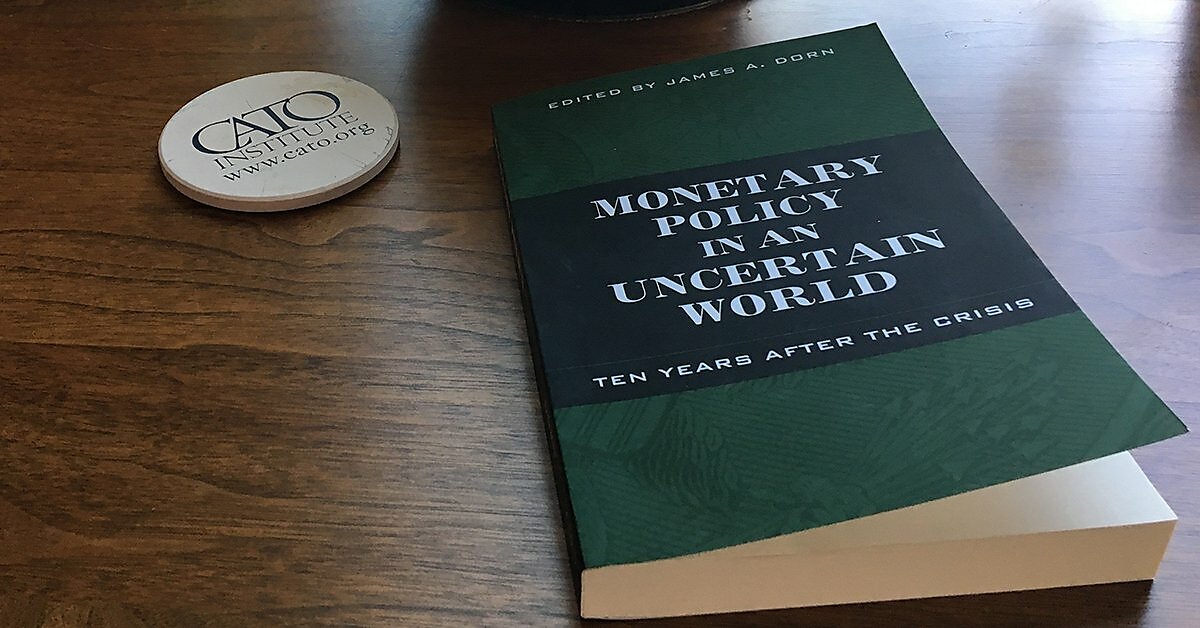This book brings together leading scholars and former policymakers to draw lessons from the decade of unconventional monetary policies relied upon to stimulate the global economy in the aftermath of the financial crisis. The articles included in this book combine historical perspectives and forward-looking views of the Fed’s exit strategy and monetary normalization, along with the arguments for a rules-based monetary policy both at the domestic and international levels.
Kevin Warsh, a former member of the Board of Governors of the Federal Reserve System, reminds us in his article that, although the economy has improved since the crisis, the tasks facing the Fed are still large. “So we should resist allowing the policy debate to be small or push aside ideas that depart from the prevailing consensus. The Fed’s job is not easier today, and its conclusions are not obvious.” The contributors to this volume meet Warsh’s challenge by questioning the status quo and offering fresh ideas for improving monetary policy.
The financial crisis highlighted the uncertainty that confronts policymakers. Having failed to prevent the 2008 financial crisis and the Great Recession, the Federal Reserve and other major central banks all subsequently adopted similar policies characterized by near-zero interest rates, quantitative easing and forward guidance. Those unconventional monetary policies were designed to increase risk taking, prop up asset prices, increase spending and restore full employment.
While asset prices have risen and unemployment is at historic lows, the Fed’s balance sheet ballooned from about $800 billion before the crisis to more than $4 trillion today, and the long period of near-zero interest rates has created a series of asset bubbles, which risk being burst as interest rates rise again.
Moreover, the Fed has engaged in preferential credit allocation through its large-scale asset purchase program, in which it has acquired billions of dollars’ worth of mortgage-backed securities and shifted out of short-term Treasuries to longer-term government debt.
In order to expand its balance sheet, the Fed has radically changed its operating procedure. Instead of engaging in open market operations nudging the policy rate toward a single target rate by buying and selling short-term Treasuries, the Fed now establishes a target range for the funds rate—with the rate of interest on excess reserves (IOER), introduced in October 2008, as its upper limit and the Fed’s overnight reverse repurchase (ON RRP) agreement rate as its lower limit.
Because the IOER exceeds comparable market rates, some banks now find it worthwhile to accumulate excess reserves instead of trading them for other assets. The economy is, in other words, kept in a purpose-made “liquidity trap,” so that the traditional monetary “transmission mechanism” linking increases in the monetary base to changes in bank lending, overall spending, and inflation, no longer functions as it once did. Under the new operating arrangements, the Fed changes its policy stance by changing its IOER and ON RRP rates, thereby influencing not the supply of but the demand for the Fed’s deposit balances.
Meanwhile, the Fed’s regulatory powers have increased dramatically as well. The Federal Reserve System, which was intended to be decentralized so that policymakers would take account of divergent ideas, has become even more centralized with each new crisis. As a result, monetary policy has also become more politicized.
Finally, the lack of any systematic policy rule to guide long-run decisions has increased regime uncertainty. The so-called knowledge problem—and the limits of monetary policy—need to be widely recognized. Policymakers err by paying too much attention to short-run remedies and too little attention to the long-run consequences of current decisions. If human judgments were perfect, then purely discretionary monetary policy would be ideal. However, as Karl Brunner (1980: 61) wisely noted, the reality is that:
We suffer neither under total ignorance nor do we enjoy full knowledge. Our life moves in a grey zone of partial knowledge and partial ignorance. [Consequently], a nonactivist [rules-based] regime emerges … as the safest strategy. It does not assure us that economic fluctuations will be avoided. But it will assure us that monetary policymaking does not impose additional uncertainties … on the market place.*
Before serious consideration can be given to implementing any rules-based monetary regime, the Fed needs to normalize monetary policy by ending interest on excess reserves and shrinking its balance sheet to restore a precrisis federal funds market. Once changes in base money can be effectively transmitted to changes in the money supply and nominal income, the Fed can then implement a rules-based regime to reduce uncertainty and spur investment and growth.
The ideas put forth in this volume for monetary reform are meant to inform policymakers and the public about the importance of maintaining a credible monetary policy regime both for financial stability and economic prosperity. Ensuring long-run price stability, letting market forces set interest rates and allocate credit, and keeping nominal income on a steady growth path will create new opportunities and widen the scope of markets to promote economic performance.
This article originally appears as the Editor’s Preface in Monetary Policy in an Uncertain World: Ten Years After the Crisis
* Reference: Brunner, K. (1980) “The Control of Monetary Aggregates.” In Controlling Monetary Aggregates III, 1–65. Boston: Federal Reserve Bank of Boston.


